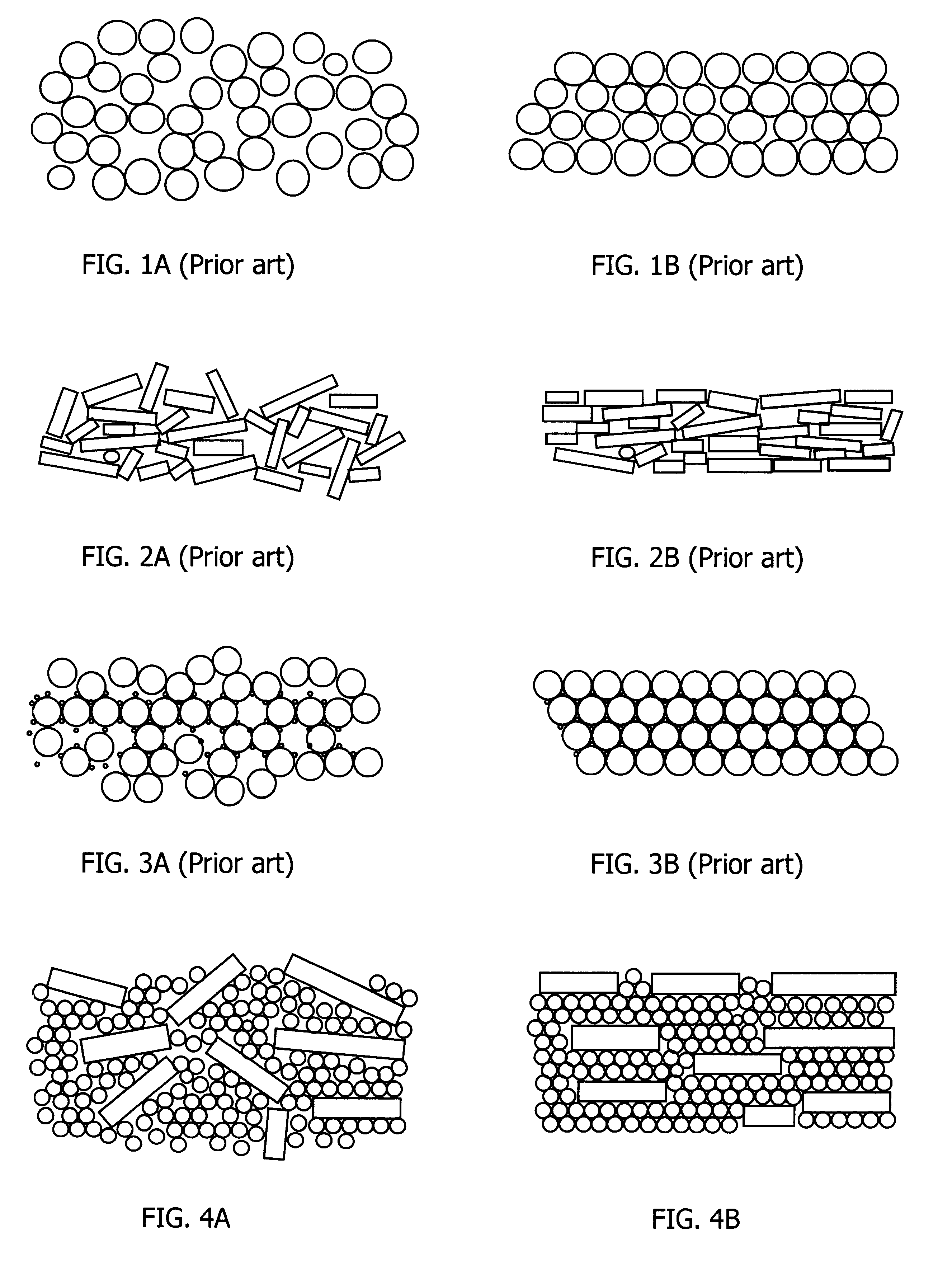Method of preparing metal matrix composite with textured compound
a metal matrix composite material and compound technology, applied in the direction of non-metal conductors, conductors, oxide conductors, etc., can solve the problems of slow growth rate, difficult deformation process, and failure to achieve high critical current density of powder-in-tube methods,
- Summary
- Abstract
- Description
- Claims
- Application Information
AI Technical Summary
Benefits of technology
Problems solved by technology
Method used
Image
Examples
example 2
As the central part of the wire shown in FIG. 5A is not used to pack superconducting materials, the central part can be made empty. A superconducting tubing is prepared as shown in FIG. 5B by following similar processing procedures in Example 1. Since the texture orientation changes in the round wires shown in FIGS. 5A-C, the grain size of the final superconducting phase should be small enough so that the orientation mismatch between adjacent grains should be smaller than the critical mismatch angle of around 5-10.degree..
example 3
The slurry in Example 1 can be adjusted to a viscosity suitable for tape casting. Then the slurry is tape cast onto a metal substrate with an oxygen diffusion barrier layer (MgO) as shown in FIG. 6A. The thickness of the green tape is about 50 .mu.m. Texture is formed in the tape casting process. The texture can be further improved by rolling of the composite tape. After binder burnout, the composite tape is sintered at around 830.degree. C. in 10% oxygen for 50 to 100 hours.
If the oxygen diffusion barrier layer is not well compatible with the superconducting material, a buffer layer can be added, as shown in FIG. 6B. There are plenty of studies of various buffer layers in association with the research on coated RBaCuO-123, which can be adapted for the preparation of the barrier layer and buffer layer in this example. When not specified, the term buffer layer may refer to all the materials between the metal substrate and the superconducting material. A typical buffer layer structure...
example 4
It should be noted that prior results with RBaCuO-123 powder-in-tube methods are not good. The primary reason may be the lack of easy cleavage which exists in the Bi-based superconductors. The "roller-skate" powder structure in the present invention can solve the problem.
NdBa.sub.2 Cu.sub.3 Ox powder is prepared by a freeze-drying method. The calcination is performed at around 900.degree. C. in a flowing gas of a low oxygen partial pressure of 0.1% oxygen at ambient pressure. The as formed particles are plate-like with a particle size of around 5 .mu.m and the thickness of plate less than 1 .mu.m. This powder will serve as the "board" of the "roller-skate" structure. A part of the powder is ground to less than 1 .mu.m in particle size. Metal powder of Nd, Ba, and Cu in the cation ratio of 1:2:3 is also prepared by high energy grinding to a particle size of less than 1 .mu.m. The three powders are mixed with about equal molar fraction to form a starting precursor powder.
The precursor...
PUM
| Property | Measurement | Unit |
|---|---|---|
| volume fraction | aaaaa | aaaaa |
| volume fraction | aaaaa | aaaaa |
| volume fraction | aaaaa | aaaaa |
Abstract
Description
Claims
Application Information
 Login to View More
Login to View More - R&D
- Intellectual Property
- Life Sciences
- Materials
- Tech Scout
- Unparalleled Data Quality
- Higher Quality Content
- 60% Fewer Hallucinations
Browse by: Latest US Patents, China's latest patents, Technical Efficacy Thesaurus, Application Domain, Technology Topic, Popular Technical Reports.
© 2025 PatSnap. All rights reserved.Legal|Privacy policy|Modern Slavery Act Transparency Statement|Sitemap|About US| Contact US: help@patsnap.com



